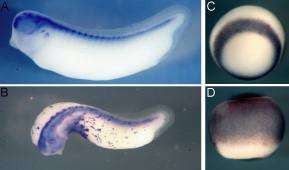
Though much work has established that FGF signaling is involved in both early mesoderm and neural development in Xenopus, the relative contributions of different FGF ligands and spliceforms have not been determined. Primarily I have focused on investigating the role of FGF8 in mesoderm formation and neural patterning. I have shown that the different spliceforms of FGF8 have different activities and are integral to early paraxial mesoderm and posterior neural development. In Xenopus there are two FGF8 spliceforms, FGF8a and FGF8b. FGF8b is a potent mesoderm inducer while FGF8a has little effect in mesoderm induction assays. FGF8 is necessary for proper gastrulation and formation of mesoderm, and FGF8b is the predominant FGF8 spliceform mediating early mesoderm development in Xenopus. Further, FGF8 signaling is necessary for proper specification of posterior neural tissue: loss of either FGF8a or a reduction in both FGF8a and FGF8b reduces the hindbrain and spinal cord domains. This work provides evidence that alternative splicing can allow for functionally distinct activities in early development.

Publications:
Fletcher RB, Baker JC, and Harland RM. (2006)
FGF8 spliceforms mediate early mesoderm and posterior neural tissue formation in Xenopus.
Development 133: 1703-14.
Fletcher RB, Watson AL, Harland RM. (2004)
Expression of Xenopus tropicalis noggin1and noggin2 in early development: two noggin genes in a tetrapod.
Gene Expr Patterns 5: 225-30.
Monsoro-Burq, A-H, Fletcher RB, Harland, RM. (2003)
Neural crest induction by paraxial mesoderm in Xenopus embryos requires FGF signals.
Development 130:3111-3124.